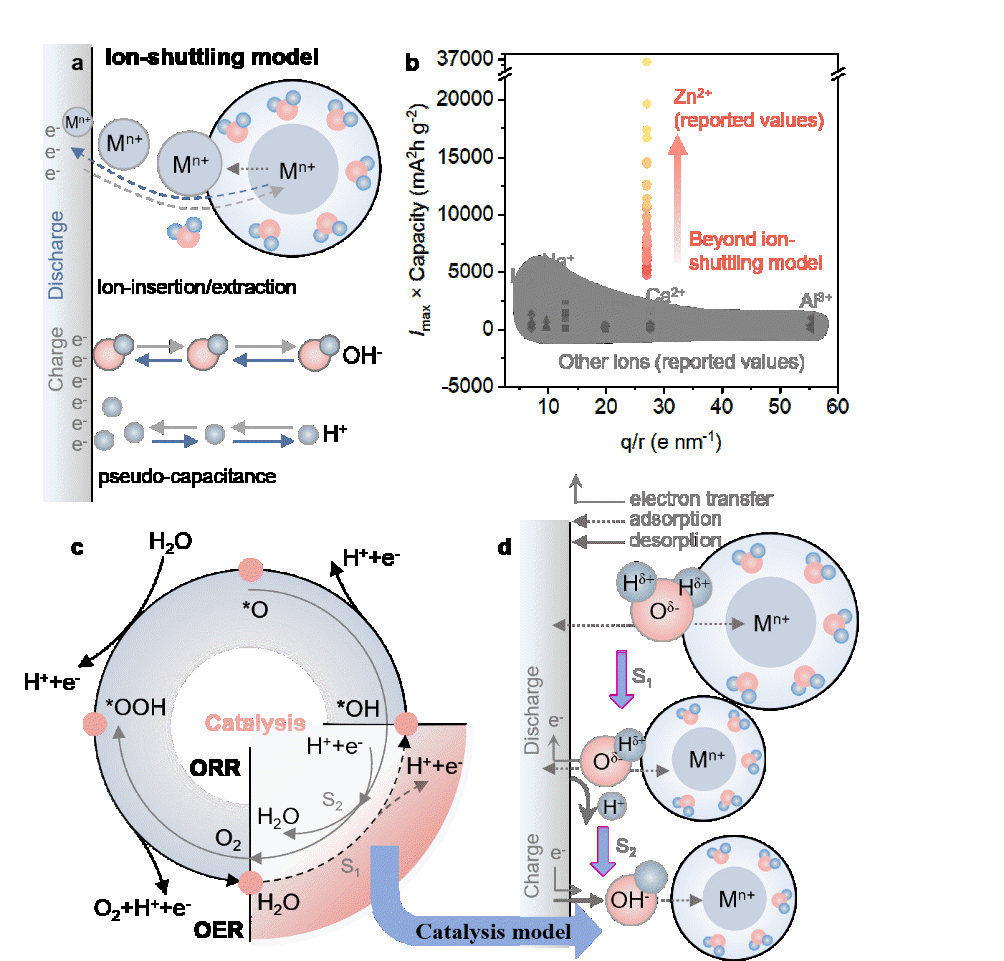
On June 14th, Professor Mai Liqiang’s team, in collaboration with other researchers, published a high-level research paper in the top international journal Nature Catalysis. The paper proposed a new mechanism for realizing ultra-fast charging batteries based on zinc ion-mediated catalysis. The team developed a super-high-power, intrinsically safe aqueous zinc-ion battery. This research provides new theoretical and technological foundations for developing and applying next-generation ultra-fast charging batteries. This is the first high-level research paper published in Nature Catalysis for WUT as the first completion unit. Professor Mai Liqiang from WUT, Professor Wang Ziyun from the University of Auckland, Academician Khalil Amine from Argonne National Laboratory in the United States, and Professor Lu Jun from Zhejiang University are the co-corresponding authors. Dai Yuhang, a graduated Ph.D. student from class of 2023, Lu Ruihu, a master's graduate from class of 2020, Zhang Chengyi, a bachelor's graduate from class of 2021, and Li Jiantao, a graduated Ph.D. student from class of 2018, are the co-first authors.
The reaction rate of the traditional ion-shuttling model is limited by the extreme of Fick's second law, making it difficult to achieve breakthroughs in rate performance. To address this global conundrum, the team innovatively proposed an ion-mediated catalytic storage theory. They discovered that regulating the adsorption of solvent sheath water by cations in electrode materials and electrolytes significantly affects the reaction rate and products of water splitting, far exceeding the reaction rate of traditional batteries. This not only explains the anomalous fast charging performance of aqueous zinc-ion batteries but also provides a new mechanism different from the traditional ion-shuttling models.

Schematic diagram of the abnormal performance of aqueous zinc-ion batteries and the mechanism of ultra-fast charging achieved by zinc ion-mediated catalysis
Mai Liqiang, a professor and doctoral supervisor, and vice president of WUT, has long been engaged in research on the science and technology and the application of new energy materials and devices. He has established the first internationally applicable model for in-situ characterization of electron/ion transport in single nanowire devices. He has also established the “Mai-Yan” field effect energy storage theory for regulating electrochemical reaction kinetics, a theory based on dual continuous electron/ion transport. He has overcome the bottleneck in the mass production technology of energy storage materials and devices, and put it into application. He has won the second prize of the State Natural Science Award, the Ho Leung Ho Lee Foundation Science and Technology Innovation Award, and other honors as the first person in charge.
Dai Yuhang, the first author of this paper, was admitted to Wuhan University of Technology in 2014. He joined Professor Mai Liqiang’s team in his freshman year, and began research on energy storage materials and devices. He has published 8 SCI papers as the first author in high-level journals such as Nature Catal.,Adv. Mater.,Angew. Chem. Int. Ed. He has won the first prize in the 15th "Challenge Cup" National College Student Curricular Academic Science and Technology Works Competition, the gold prize in the 7th China International College Students’ “Internet+” Innovation and Entrepreneurship Competition, and the National Scholarship for Doctoral Candidates. During his doctoral studies, he was sent to UCL for joint training. After obtaining a doctorate in 2023, he conducted postdoctoral research at the University of Oxford.
Original link: https://www.nature.com/articles/s41929-024-01169-6
Written by: Yang Zhongzhuo
Rewritten by: Zhou You
Edited by: Yu Mengmei, Li Tiantian
Source: School of Materials Science and Engineering
|
|